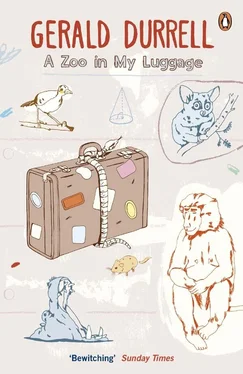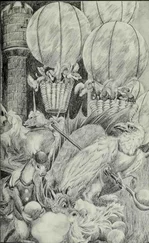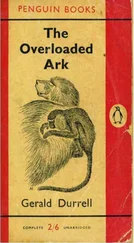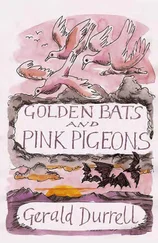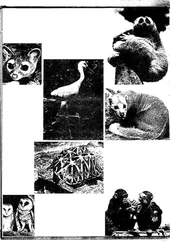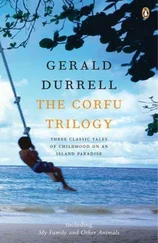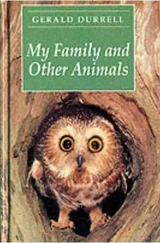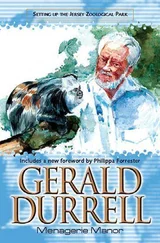Gerald Durrell - A Zoo in My Luggage
Здесь есть возможность читать онлайн «Gerald Durrell - A Zoo in My Luggage» весь текст электронной книги совершенно бесплатно (целиком полную версию без сокращений). В некоторых случаях можно слушать аудио, скачать через торрент в формате fb2 и присутствует краткое содержание. Жанр: Природа и животные, на английском языке. Описание произведения, (предисловие) а так же отзывы посетителей доступны на портале библиотеки ЛибКат.
- Название:A Zoo in My Luggage
- Автор:
- Жанр:
- Год:неизвестен
- ISBN:нет данных
- Рейтинг книги:4 / 5. Голосов: 1
-
Избранное:Добавить в избранное
- Отзывы:
-
Ваша оценка:
- 80
- 1
- 2
- 3
- 4
- 5
A Zoo in My Luggage: краткое содержание, описание и аннотация
Предлагаем к чтению аннотацию, описание, краткое содержание или предисловие (зависит от того, что написал сам автор книги «A Zoo in My Luggage»). Если вы не нашли необходимую информацию о книге — напишите в комментариях, мы постараемся отыскать её.
A Zoo in My Luggage — читать онлайн бесплатно полную книгу (весь текст) целиком
Ниже представлен текст книги, разбитый по страницам. Система сохранения места последней прочитанной страницы, позволяет с удобством читать онлайн бесплатно книгу «A Zoo in My Luggage», без необходимости каждый раз заново искать на чём Вы остановились. Поставьте закладку, и сможете в любой момент перейти на страницу, на которой закончили чтение.
Интервал:
Закладка:
We had, at that time, six egg-eating snakes, all of which were, to my delight, identical in size and coloration. The local children did a brisk trade in bringing us weaver-birds’ eggs to feed this troupe of reptiles, for they seemed capable of eating any number we cared to put in their cage. In fact, the mere introduction of an egg into the cage changed them from a somnolent pile of snakes to a writhing bundle, each endeavouring to get at the egg first. But, although they behaved so beautifully in the cage, after my experiences with Woody and the water chevrotain, I was inclined to be a bit pessimistic. However, I created a suitable set (a flowering bush in the branches of which was placed a small nest) and collected a dozen small blue eggs as props. Then the snakes were kept without their normal quota of eggs for three days, to make sure they all had good appetites. This, incidentally, did not hurt them at all, for all snakes can endure considerable fasts, which with some of the bigger constrictors run into months or years. However, when my stars had got what I hoped was a good edge to their appetites, we started work.
The snakes’ cage was carried out to the film set, five lovely blue eggs were placed in the nest and then one of the reptiles was placed gently in the branches of the bush, just above the nest. I started the camera and waited.
The snake lay flaccidly across the branches seeming a little dazed by the sunlight after the cool dimness of its box. In a moment its tongue started to flicker in and out, and it turned its head from side to side in an interested manner. Then with smooth fluidity it started to trickle through the branches towards the nest. Slowly it drew closer and closer, and when it reached the rim of the nest, it peered over the edge and down at the eggs with its fierce silvery eyes. Its tongue flicked again as if it were smelling the eggs and it nosed them gently like a dog with a pile of biscuits. Then it pulled itself a little farther into the nest, turned its head sideways, opened its mouth wide and started to engulf one of the eggs. All snakes have a jaw so constructed that they can dislocate the hinge, which enables them to swallow a prey that, at first sight, looks too big to pass through their mouths. The egg-eater was no exception and he neatly dislocated his jaws and the skin of his throat stretched until each scale stood out individually and you could see the blue of the egg shining through the fine, taut skin as the egg was forced slowly down his throat. When the egg was about an inch down his body he paused for a moment’s meditation and then swung himself out of the nest and into the branches. Here, as he made his way along, he rubbed the great swelling in his body that the egg had created against the branches so that the egg was forced farther and farther down.
Elated with this success we returned the snake to his box so that he could digest his meal in comfort, and I shifted the camera’s position and put on my big lenses for close-up work. We put another egg into the nest to replace the one taken, and then got out another egg-eater. This was the beauty of having all the snakes of the same size and coloration: as the first snake would not look at another egg until he had digested the first, he could not be used in the close-up shots. But the new one was identical and as hungry as a hunter, and so without any trouble whatsoever I got all the close-up shots I needed as he glided rapidly down to the nest and took an egg. I did the whole thing all over again with two other snakes and on the finished film these four separate sequences were intercut and no one, seeing the finished product, could tell that they were seeing four different snakes.
All the Bafutians, including the Fon, were fascinated by our filming activities, since not long before they had seen their very first cinema. A mobile ciné van had come out to Bafut and shown them a colour film of the Coronation and they had been terribly thrilled with it. In fact it was still a subject of grave discussion when we were there, nearly a year and a half later. Thinking that the Fon and his council would be interested to learn more about filming, I invited them to come across one morning and attend a filming session and they accepted with delight.
‘What are you going to film?’ asked Jacquie.
‘Well, it doesn’t really matter, so long as it’s innocuous,’ I said.
‘Why innocuous?’ asked Sophie.
‘I don’t want to take any risks … If I got the Fon bitten by something I would hardly be persona grata , would I?’
‘Good God, no, that would never do,’ said Bob. ‘What sort of thing did you have in mind?’
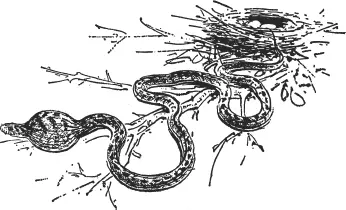
‘Well, I want to get some shots of those pouched rats, so we might as well use them. They can’t hurt a fly.’
So the following morning we got everything ready. The film set, representing a bit of forest floor, had been constructed on a Dexion stand, one of our specially made nylon tarpaulins had been erected nearby, under which the Fon and his court could sit, and beneath it were placed a table of drinks and some chairs. Then we sent a message over to the Fon that we were ready for him.
We watched him and his council approaching across the great courtyard and they were a wonderful spectacle. First came the Fon, in handsome blue and white robes, his favourite wife trotting along beside him, shading him from the sun with an enormous orange and red umbrella. Behind him walked the council members in their fluttering robes of green, red, orange, scarlet, white and yellow. Around this phalanx of colour some forty-odd of the Fon’s children skipped and scuttled about like little black beetles round a huge, multicoloured caterpillar. Slowly the procession made its way round the Rest House and arrived at our improvised film studio.
‘Morning, my friend,’ called the Fon, grinning. ‘We done come for see dis cinema.’
‘Welcome, my friend,’ I replied. ‘You like first we go have drink together?’
‘Wah! Yes, I like,’ said the Fon, lowering himself cautiously into one of our camp chairs.
I poured out the drinks, and as we sipped them I explained the mysteries of ciné photography to the Fon, showing him how the camera worked, what the film itself looked like and explaining how each little picture was of a separate movement.
‘Dis filum you take, when we go see um?’ asked the Fon, when he had mastered the basic principles of photography.
‘I have to take um for my country before it get ready,’ I said sadly, ‘so I no fit show you until I go come back for the Cameroons.’
‘Ah, good,’ said the Fon, ‘so when you go come back for dis ma country we go have happy time and you go show me dis your filum.’
We had another drink to celebrate the thought of my impending return to Bafut.
By this time everything was ready to show the Fon how one set about making a sequence. Sophie, as continuity girl, wearing trousers, shirt, sun-glasses and an outsize straw hat, was perched precariously on a small camp stool, her pad and pencil at the ready to make notes of each shot I took. Near her Jacquie, a battery of still cameras slung round her, was crouched by the side of the recording machine. Near the set, Bob stood in the role of dramatic coach, armed with a twig, and the box in which our stars were squeaking vociferously. I set up the camera, took up my position behind it and gave the signal for action. The Fon and councillors watched silent and absorbed as Bob gently tipped the two pouched rats out on to the set, and then guided them into the right positions with his twig. I started the camera and at the sound of its high-pitched humming a chorus of appreciative ‘Ahs’ ran through the audience behind me. It was just at that moment that a small boy carrying a calabash wandered into the compound and, oblivious of the crowd, walked up to Bob and held up his offering. I was fully absorbed in peering through the viewfinder of the camera and so I paid little attention to the ensuing conversation that Bob had with the child.
Читать дальшеИнтервал:
Закладка:
Похожие книги на «A Zoo in My Luggage»
Представляем Вашему вниманию похожие книги на «A Zoo in My Luggage» списком для выбора. Мы отобрали схожую по названию и смыслу литературу в надежде предоставить читателям больше вариантов отыскать новые, интересные, ещё непрочитанные произведения.
Обсуждение, отзывы о книге «A Zoo in My Luggage» и просто собственные мнения читателей. Оставьте ваши комментарии, напишите, что Вы думаете о произведении, его смысле или главных героях. Укажите что конкретно понравилось, а что нет, и почему Вы так считаете.
